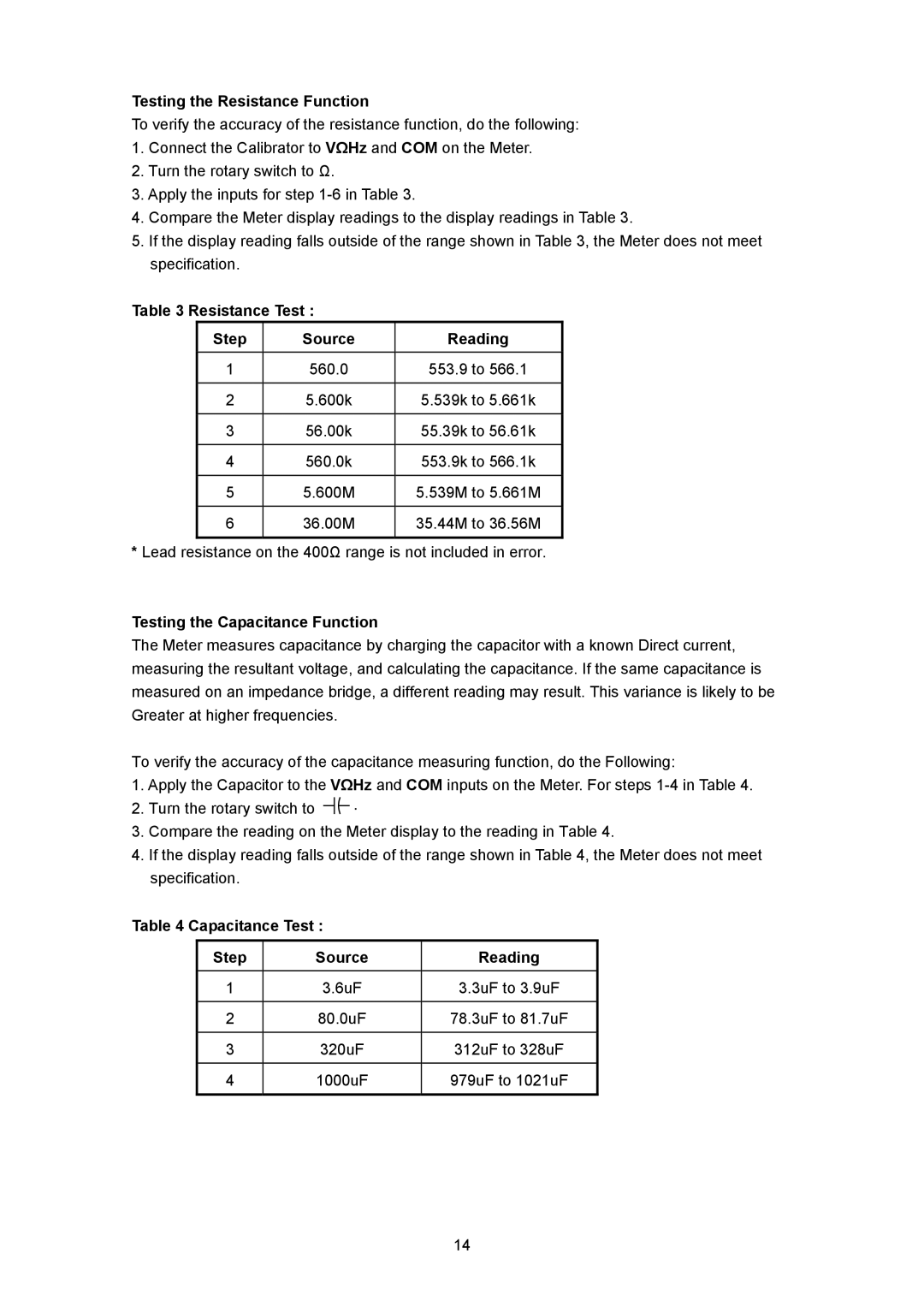Testing the Resistance Function
To verify the accuracy of the resistance function, do the following:
1.Connect the Calibrator to VΩHz and COM on the Meter.
2.Turn the rotary switch to Ω.
3.Apply the inputs for step
4.Compare the Meter display readings to the display readings in Table 3.
5.If the display reading falls outside of the range shown in Table 3, the Meter does not meet specification.
Table 3 Resistance Test :
Step | Source | Reading |
1 | 560.0 | 553.9 to 566.1 |
|
|
|
2 | 5.600k | 5.539k to 5.661k |
|
|
|
3 | 56.00k | 55.39k to 56.61k |
|
|
|
4 | 560.0k | 553.9k to 566.1k |
|
|
|
5 | 5.600M | 5.539M to 5.661M |
|
|
|
6 | 36.00M | 35.44M to 36.56M |
|
|
|
*Lead resistance on the 400Ω range is not included in error.
Testing the Capacitance Function
The Meter measures capacitance by charging the capacitor with a known Direct current, measuring the resultant voltage, and calculating the capacitance. If the same capacitance is measured on an impedance bridge, a different reading may result. This variance is likely to be Greater at higher frequencies.
To verify the accuracy of the capacitance measuring function, do the Following:
1.Apply the Capacitor to the VΩHz and COM inputs on the Meter. For steps
2.Turn the rotary switch to ![]()
![]()
3.Compare the reading on the Meter display to the reading in Table 4.
4.If the display reading falls outside of the range shown in Table 4, the Meter does not meet specification.
Table 4 Capacitance Test :
Step | Source | Reading |
1 | 3.6uF | 3.3uF to 3.9uF |
|
|
|
2 | 80.0uF | 78.3uF to 81.7uF |
|
|
|
3 | 320uF | 312uF to 328uF |
|
|
|
4 | 1000uF | 979uF to 1021uF |
|
|
|
14
